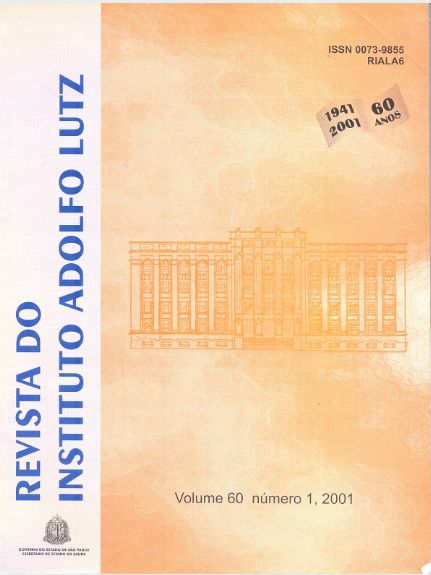Abstract
In the current work a process of refining fish oil was studied that determined, through Factorial Experimental Design, the variables which significantly influence the neutralization and bleaching stages. The crude fish oil was treated with phosphoric acid 85%, neutralized with sodium hidroxide 20% w/w in excess, washed with hot water and dried under vacuum, being bleached with adsorbent substances and filtered. During the neutralization stage some oil with Peroxide Values of 2.1 mEq/Kg and 0.04 of Free Fatty Acids was obtained, in the range of 40°C and 4.0% excess NaOH 20%. The temperature and the excess NaOH were the main influential variables of the process. During the bleaching stage, a complete factorial experimental design (2K) involving temperature, retention time, %Adsorbent and %Charcoal/Adsorbent was used. The % Adsorbent and % Charcoal/Adsorbent significantly influenced the Lovibond color and Peroxide Values of the bleached oil. The best results for the Lovibond Red 1.24, Lovibond Yellow 30 and Peroxide Value of 3.93 meq/Kg of the bleached oil were found in the range of 70°C and time of 20 minutes, with 5.0% of adsorbent and 10.0% of Charcoal/Adsorbent.
References
1. American Oil Chemists Society (AOCS). Official and Tentative Methods of American Oil Chemists Society. 3rd ed., 1980 (Ca 5a-40; Cd 1-25; Cd 8-53; Cd 36-76).
2. Barlow, S.M.; Young, V. World Fish Oils: an Update. InternationalFishmeal and Oils Manufacturers Association, 1996, p. 33-37.
3. Bernardini, E. Tecnologia de Aceites y Grasas. Editorial Alhambra, S. A., Madrid (Espanha), 1986, p. 229-316.
4. Bimbo, A.P.; Crowther, J.B. Fish Oils: Processing Beyond Crude Oil. Infofish International, junho de1991, p. 20-24.
5. Contreras, E.S.G. Bioquímica de Pescados e Derivados. FUNEP, Jaboticabal, 1994, p. 315 330.
6. Diez, R. Degomagem: Tendências e Novas Tecnologias. In: Seminário: Preparação de Matérias-Primas e Extração de Óleos. Campinas, São Paulo, 25 e 26 de abril de 1995, p. 108 125.
7. Erickson, D.R. et al., (ed). Bleaching. In: Handbook of Soy Oil Processing and Utilization. Third Printing. St. Louis, Missouri and Champaign, Illinois: American Soybean Association and American Oil Chemists Society, 1985, p.110-112.
8. Gruger-Jr, E.H.G. Empleos de los Aceites de Pescado Industriales. In: Stansby, M. E. Tecnología de la Industria Pesquera. Capítulo 21. Editorial Acríbia, Zaragoza (España), 1968, p. 308-309.
9. Hartman, L.; Esteves, W. Tecnologia de Óleos e Gorduras Vegetais. São Paulo, Secretaria da Indústria, Comércio, Ciência e Tecnologia (Série Tecnologia Agroindustrial, 13), 1981, 169 p.
10. Mag, T.K. Blanqueo: Teoría y Práctica. Research Center, Canadá, Aceites y Grasas, septiembre de 1994, p. 49-52.
11. Montgomery, D.C. Design and Analysis of Experiments. John Wiley e Sons, 4th ed., 1997.
12. Moretto, E.; Alves, R.F. Óleos e Gorduras Vegetais: Processamento e Análises. Florianópolis: Editora da UFSC; 1986, p. 19-31 e 83-98.
13. Moretto, E.; Fett, R. Tecnologia de Óleos e Gorduras Vegetais na Indústria de Alimentos. São Paulo: Livraria Varela; 1998, 150 p.
14. Norris, F. A. Refining and Bleaching. In: Bailey's Industrial and Fat Products. John Wiley & Sons, 4th ed., v. 2, 1982, p. 253-314.
15. Pedroso, A.M. et al. Processos de Clarificação de Óleo de Pescado. Vetor, FURG, Rio Grande, 7, 1997, p. 71-80.
16. Perfiltra do Brasil. Auxiliares Filtrantes (Catálogo). São Paulo (SP), 1982.
17. Pigott, G.M.; Fucker, B.W. Seafood: Effects of Technology on Nutrition. Washington: University of Washington; 1990, p. 258-314.
18. Reguly, J.C. Introdução à Analítica e à Tecnologia dos Carboidratos, Lipídios, Proteínas e Enzimas: um Manual de Laboratório. Rio Grande: FURG; 1983, p. 32.
19. Rittner, H. Óleo de Palma: Processamento e Utilização. 1ª ed., 1996, p. 151-207.
20. Sarikaya, Y. Blanqueo de Aceites Vegetables Y Tierras de Blanqueo. Aceites y Grasas, Ankara University, Ankara, Turquia, septiembre de 1994, p. 69 71.
21. Werkema, M.C.C. Otimização Estatística de Processos: Como Determinar a Condição de Operação de um Processo que Leva ao Alcance de uma Meta e Melhoria. Belo Horizonte, MG: Fundação Christiano Ottoni, Escola de Engenharia da UFMG; 1996, p. 27-91; 185-258.
22. Windsor, M.; Barlow, S. Introdución a los Subproductos de Pesquería. Editorial Acríbia, Zaragoza (España), 1984, p. 84-97; 180-201.
23. Zanotta, P.A. Ensaios Cinéticos de Branqueamento de Óleo de Soja. Florianópolis, 1999 [Dissertação de Mestrado - Universidade Federal de Santa Catarina, UFSC].

This work is licensed under a Creative Commons Attribution 4.0 International License.
Copyright (c) 2001 Instituto Adolfo Lutz Journal
